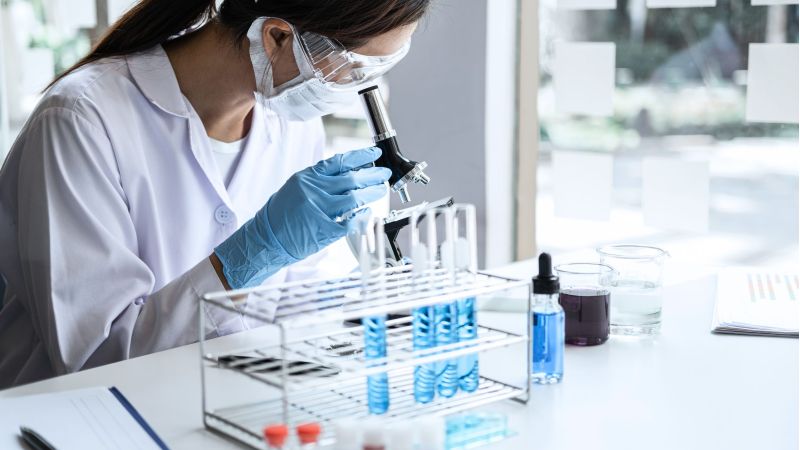
The Remarkable Promise of Sirtuins in their Role in Aging, Metabolism and Longevity
Sirtuins play an indispensable role in slowing and even stopping aging, improving metabolism, and longevity.
“The longevity genes I work on are called ‘sirtuins’, named after the yeast SIR2 gene, the first one to be discovered. There are seven sirtuins in mammals, SIRT1 to SIRT7, and they are made by almost every cell in the body.”
Dr. David A. Sinclair, Professor of Genetics
Sirtuins have gained significant attention recently for their potential role in human health and longevity. These highly conserved enzymes, found in all living organisms, have been studied extensively to understand their impact on various physiological processes. This article will delve into the world of sirtuins, exploring what they are, how they function, and the potential implications they hold for human health.
What are Sirtuins?
Sirtuins are a family of proteins that act as nicotinamide adenine dinucleotide (NAD+)-dependent deacylases or ADP-ribosyltransferases. These enzymes are involved in various cellular functions, including gene regulation, DNA repair, metabolism, and stress response. They have been shown to play a crucial role in maintaining cellular homeostasis and promoting longevity.
The Basic Biology of Sirtuins
At the core of sirtuins’ activity is their ability to remove various acyl groups from protein lysine residues through a process called deacylation. This process can alter the structure and function of proteins, thus influencing cellular processes. Sirtuins require NAD+ as a cofactor to carry out their enzymatic activity, linking them closely to cellular metabolic status.
Sirtuins can directly regulate gene expression by deacetylating histone proteins, which are involved in DNA packaging. This modification can lead to changes in chromatin structure, allowing or preventing access to specific genes. Moreover, sirtuins can target non-histone proteins, such as transcription factors, enzymes, and metabolic regulators, affecting their function and activity.
Furthermore, sirtuins have been found to have a role in cellular stress response. When cells are exposed to various stressors, such as oxidative stress or DNA damage, sirtuins are activated to help mitigate the damage. They can promote DNA repair mechanisms and enhance cell survival under stressful conditions. This ability to respond to stress is crucial for maintaining cellular integrity and preventing the accumulation of cellular damage over time.
Additionally, sirtuins have been implicated in the regulation of metabolism. Sirtuins can modulate energy production and utilization by targeting key metabolic regulators, such as peroxisome proliferator-activated receptor gamma coactivator 1-alpha (PGC-1α). This can have implications for various metabolic processes, including glucose and lipid metabolism. Sirtuins have been shown to regulate insulin sensitivity and glucose homeostasis, making them potential targets for therapeutic interventions in metabolic disorders such as diabetes.
Different Types of Sirtuins
There are seven known sirtuins in mammals, labeled as SIRT1 to SIRT7. Each sirtuin has distinctive subcellular localization and function. SIRT1, the best-studied member of the family, is primarily localized in the nucleus and regulates various biological pathways, including DNA repair, stress response, and inflammation.
SIRT2 and SIRT6, on the other hand, have been found to play important roles in maintaining genomic stability. SIRT2 is predominantly located in the cytoplasm and nucleus and is involved in cell cycle progression and DNA damage repair. It helps ensure accurate DNA replication and repair mechanisms, preventing the accumulation of mutations and genomic instability. SIRT6, also found in the nucleus, participates in DNA repair processes and helps maintain telomere integrity, which is crucial for preserving chromosomal stability.
SIRT3, SIRT4, and SIRT5 are primarily located within the mitochondria, where they impact cellular metabolism and energy production. SIRT3, the most extensively studied mitochondrial sirtuin, regulates various metabolic pathways, including fatty acid oxidation and oxidative phosphorylation. It helps optimize mitochondrial function and energy production, ensuring efficient cellular metabolism. SIRT4, on the other hand, has been found to regulate insulin secretion and amino acid metabolism. SIRT5, the least understood mitochondrial sirtuin, has been implicated in regulating mitochondrial protein function through post-translational modifications.
SIRT7, predominantly localized in the nucleolus, participates in RNA transcription and ribosome biogenesis. It plays a role in maintaining ribosomal DNA stability and modulating ribosome biogenesis, which is essential for protein synthesis and cellular function. SIRT7 has also been found to regulate the expression of genes involved in cell growth and proliferation.
In conclusion, sirtuins are a fascinating family of proteins that have diverse roles in cellular function. From gene regulation to DNA repair, metabolism, and stress response, they are involved in maintaining cellular homeostasis and promoting longevity. Understanding the intricate mechanisms and functions of sirtuins opens up new avenues for research and potential therapeutic interventions in various diseases and age-related conditions.
The Role of Sirtuins in the Human Body
The intricate biological functions of sirtuins have led researchers to investigate their role in human health and disease. Here, we explore some of the key areas where sirtuins exert their influence.
Sirtuins, a class of proteins found in all living organisms, are involved in a wide range of cellular processes that are essential for maintaining optimal health. These proteins play a critical role in maintaining cellular health by regulating processes such as DNA repair, cellular metabolism, and oxidative stress response.
Sirtuins and Cellular Health
Sirtuins have been shown to promote DNA damage repair, preventing the accumulation of harmful mutations and reducing the risk of genomic instability. By ensuring the integrity of the genetic material, sirtuins help maintain the proper functioning of cells and prevent the development of diseases such as cancer.
Additionally, sirtuins are involved in the regulation of cellular metabolism, promoting energy production, glucose homeostasis, and lipid metabolism. They play a crucial role in balancing energy utilization and storage, ensuring that cells have the necessary resources to carry out their functions efficiently.
Sirtuins and Metabolism
The intimate relationship between sirtuins and metabolism has sparked great interest in understanding their impact on metabolic diseases such as obesity, type 2 diabetes, and cardiovascular disease. Sirtuins are known to regulate various metabolic pathways, including fatty acid oxidation, glucose metabolism, and insulin sensitivity.
By modulating these pathways, sirtuins have the potential to influence metabolic health and mitigate the risk of metabolic disorders. Research has shown that activating sirtuins can improve insulin sensitivity, reduce inflammation, and enhance mitochondrial function, all of which are crucial for maintaining metabolic homeostasis.
Sirtuins and Aging
Aging is a complex process influenced by various factors, including genetic, environmental, and lifestyle factors. Sirtuins have emerged as key regulators of the aging process, with extensive research indicating their involvement in lifespan extension.
By promoting DNA repair, reducing oxidative stress, and improving cellular function, sirtuins have been shown to extend the lifespan of various organisms, from yeast to mammals. These proteins can remarkably enhance the resilience of cells and delay the onset of age-related diseases.
The precise mechanisms by which sirtuins impact aging are still under investigation, but their potential to modulate the aging process holds promise for interventions to promote healthy aging. Researchers are actively exploring ways to harness the power of sirtuins to develop novel therapeutics that can slow down the aging process and improve overall health in humans.
The Impact of Sirtuins on Human Health
The roles of sirtuins extend beyond cellular processes, with implications for overall human health and well-being. Here are some of the potential benefits sirtuins offer.
Sirtuins, a class of proteins found in all living organisms, have been the subject of extensive research in recent years. These proteins are involved in various cellular processes, including DNA repair, metabolism regulation, and cellular homeostasis. While their precise mechanisms of action are still being unraveled, scientists have discovered that sirtuins play a crucial role in maintaining cellular health and function.
Sirtuins and Disease Prevention
Studies have suggested that sirtuins may play a crucial role in disease prevention. By maintaining cellular health, promoting DNA repair, and regulating metabolism, sirtuins have the potential to reduce the risk of various age-related diseases, including cancer, neurodegenerative disorders, and metabolic syndromes. The intricate interplay between sirtuins and other cellular pathways involved in disease development is a topic of ongoing research.
One area of particular interest is the role of sirtuins in cancer prevention. Research has shown that sirtuins can influence the activity of certain genes involved in tumor suppression and DNA repair. By enhancing these protective mechanisms, sirtuins may help prevent the development and progression of cancer cells. However, it is important to note that the relationship between sirtuins and cancer is complex, and more studies are needed to understand their impact fully.
Sirtuins and Longevity
The ability of sirtuins to extend lifespan in experimental models has sparked excitement about their potential to promote longevity in humans. Although the direct evidence for sirtuins’ impact on human lifespan is still lacking, their involvement in critical cellular processes implicated in aging makes them intriguing targets for anti-aging interventions.
One of the key mechanisms through which sirtuins may influence aging is by preserving DNA integrity1. As cells age, DNA damage accumulates, leading to various age-related diseases. Sirtuins have been shown to enhance DNA repair mechanisms, reducing the accumulation of DNA damage and potentially slowing down the aging process.
In addition to DNA repair, sirtuins also play a role in improving mitochondrial function. Mitochondria are the powerhouses of the cell, responsible for generating energy. As we age, mitochondrial function declines, leading to decreased energy production and increased oxidative stress. Sirtuins have been found to enhance mitochondrial function, potentially mitigating age-related decline and promoting healthier aging.
Sirtuins and Mental Health
Emerging evidence highlights the potential influence of sirtuins on mental health and cognitive function. Sirtuins are known to affect neural plasticity, synaptic activity, and the production of neurotrophic factors, all of which are critical for maintaining optimal brain function.
Dysfunction of sirtuins has been linked to neurodegenerative diseases, such as Alzheimer’s and Parkinson’s disease. Studies have shown that sirtuins play a role in clearing toxic protein aggregates that contribute to the development of these diseases. By enhancing the brain’s ability to remove these harmful substances, sirtuins may offer a potential avenue for therapeutic interventions in neurodegenerative disorders.
Furthermore, sirtuins have been implicated in mood regulation and stress response. Animal studies have shown that manipulating sirtuin activity can influence behaviors related to anxiety and depression. These findings suggest that sirtuins may be involved in the complex interplay between biological processes and mental health.
While the potential benefits of sirtuins on mental health are promising, further research is needed to fully understand their mechanisms of action and their potential as therapeutic targets.
Modulating Sirtuin Activity for Health Benefits
Given the potential impact of sirtuins on human health, researchers have been investigating strategies to modulate their activity. Here, are two main approaches—dietary interventions and pharmacological approaches—to enhance sirtuin function.
Dietary Interventions to Boost Sirtuin Activity
Several dietary components have been shown to activate sirtuins, including resveratrol in grapes and red wine and other polyphenols2 that are in fruits and vegetables. Caloric restriction, a well-known approach to promote health and longevity, has also been associated with increased sirtuin activity. Additionally, fasting and intermittent fasting have been found to stimulate sirtuin expression. While more research is needed to fully understand the impact of these dietary interventions on sirtuin activity, they offer promising strategies for augmenting sirtuin function naturally.
Pharmacological Approaches to Modulate Sirtuins
Pharmaceutical companies have been actively developing small molecule compounds targeting sirtuins. These compounds, known as sirtuin activators or sirtuin modulators, aim to enhance sirtuin function and replicate the benefits associated with sirtuin activation. While the development and clinical translation of sirtuin-targeting drugs is still ongoing, they represent an exciting avenue for potential therapeutic interventions in the future.
Future Directions in Sirtuin Research
The field of sirtuin research continues to evolve, with many avenues of investigation still to be explored. Here are some of the unanswered questions and potential applications that lie ahead.
Unanswered Questions about Sirtuins
Despite extensive research, several unanswered questions remain regarding sirtuins. The precise mechanisms of sirtuin activation and regulation, their interplay with other cellular pathways, and their tissue-specific functions are topics of ongoing investigation. Understanding these nuances will provide a more comprehensive understanding of sirtuin biology and potentially reveal new therapeutic targets.
Potential Therapeutic Applications of Sirtuins
As the understanding of sirtuins expands, so does the potential for therapeutic applications. Modulating sirtuin activity may hold promise in various disease areas, including cancer, metabolic disorders, neurodegenerative diseases, and age-related conditions. Ongoing research aims to harness the power of sirtuins to develop targeted interventions that can improve human health and extend lifespan.
Conclusion
In conclusion, sirtuins are a fascinating group of proteins with diverse cellular functions and significant implications for human health and longevity. As research in this field continues to progress, we gain further insight into their biological roles and potential therapeutic applications. Understanding sirtuins and their impact on human health opens new doors for interventions to promote healthy aging and mitigate the risk of age-related diseases. With ongoing investigations and potential therapeutic developments, the future of sirtuin research holds great promise for improving the quality of human life. Increase your sirtuin levels with Vitality ↑® NAD+ Booster, a NAD supplement. This supplement can boost energy levels, improve mental clarity, and reduce inflammation.
Lastly, if you’re interested in going deeper on health-related content, here are a few of our recent posts that you may want to read:
- Andrew Huberman is Wrong About NAD, NAD+ precursor & Longevity
- 9 Powerful Benefits of Optimizing Your NAD
- What Does Peak Performance Look Like?
- Why Optimized, Precision Medicine is the Future
Referenced Sources:
Read More













